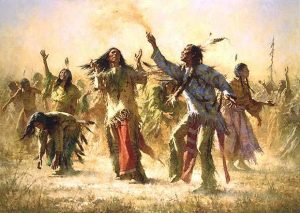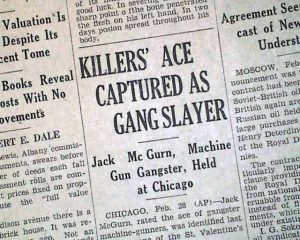If you’re from South Texas or Mexico, it’s very likely that you have at least a small bit of knowledge as to what Mexican Folk Dancing is: the art of dancing in beautifully colored dresses, telling their own story through their dance movements. Mexican Folkloric Dancing is very important in Mexico as it is one of the many ways that the people of Mexico celebrate their culture, independence, and ancestors.
The Mexican Hat Dance is one of the most popular Mexican Folk dances in Mexico. Originating from the state of Jalisco, the Mexican Hat Dance became one of the most popular dances in Mexico and soon made its way to South Texas. Jalisco is not only home to the Mexican Hat Dance, but it is also home to mariachi bands, the China Poblana female and Charro male costumes, and other Jarabe dance forms.1

The Mexican Hat Dance is usually performed by a couple (a man and a woman), where the dancers do not touch each other, but show the courtship between the each other.2 The Mexican Hat Dance, also known as “el Jarabe,” is a dance of flirtation. In the beginning of the dance, the woman is shy and timid, while the man is attentive and persistent. In most versions, the man tosses his sombrero on the floor so that he and the woman can dance around it.3 Most people from Guadalajara (a city in Jalisco) call the Mexican Hat Dance “el Jarabe Tapatio.” Jarabe means a specific mestizo song and dance form, and Tapatío is a term that is used to refer to the people of Guadalajara.4 This is why dancing is such an important art in Mexico. Although there are many forms of el Jarabe (The Mexican Hat Dance), el Jarabe Tapatio is the most important to the people of Jalisco–especially the people of Guadalajara. El Jarabe Tapatio gives a name to the people of Guadalajara and it lets everyone who performs their dance know that they are performing the dance of Guadalajara.
In the early 1900s, Anna Pavlova—a great Russian Ballerina—made the Mexican Hat Dance part of her repertoire and the Mexican Hat Dance became the “National Folk Dance” of Mexico.5 When Anna Pavlova fell in love with the dance and made it part of her repertoire in 1919, the ecstatic Mexican cultural authorities felt that it was an honor and that it could only mean that the Mexican Hat Dance was indeed the most important dance in Mexico. Thus it was decided, since it was such an important dance, that it should be danced wearing the “China Poblana” outfit. The outfit is a beautiful green, wide brimmed skirt with colorful sequence and a coordinating white blouse.6

The Jarabe Tapatío, or the Mexican Hat Dance, is a Mexican folk art that signifies the Mexican identity. Not only does it commemorate a sense of unity throughout the country of Mexico, it also showcases the traditions and culture of Mexico.7 Since its popularity came about during the Mexican Revolution, it brings a sense of cultural identity to the Mexican people: being able to showcase who they are and what they love through the beautiful art of dancing. Dancing in Mexico is a very important part of their culture as they use it to express themselves and to showcase who they are. The beauty and vividness of the dresses and the grace of the dancing are what have captivates audiences around the world.
Today, Mexican Folkloric dances are seen all throughout Mexico and all throughout South Texas. From festivals to basic social gatherings and even in dance competitions; not only is the Mexican Hat Dance seen, but many other forms of Mexican Folk dances are seen all throughout. Even in places like Fiesta, the ten-day long celebration that takes place in downtown San Antonio, citizens see Mexican Folkloric dancing take place all throughout the Fiesta celebration. The Mexican Hat Dance is not just a dance to the people of Mexico, rather, it is a way of showcasing to the rest of the world who the people of Mexico really are.
- Anthony Shay, Choreographic Politics: State Folk Dance Companies, Representation and Power (Middletown, CT: Wesleyan University Press, 2002), 40-41. ↵
- Jose Luis Ovalle, “The Mexican Hat Dance: National Folk Dance of Mexico,” Mexican Dance Company, 2007, http://mexicandancecompany.org/mexican-dance/mexican-hat-dance.html. ↵
- Encyclopedia Britannica, June 2017, s.v. “Jarabe: Mexican Dance.” ↵
- Brenda M. Romero, Dancing Across Borders: Danzas Y Bailes Mexicanos (Urbana and Chicago: University of Illinois Press, 2009), 287. ↵
- Jose Luis Ovalle, “The Mexican Hat Dance: National Folk Dance of Mexico,” Mexican Dance Company, 2007, http://mexicandancecompany.org/mexican-dance/mexican-hat-dance.html. ↵
- Jose Luis Ovalle, “The Mexican Hat Dance: National Folk Dance of Mexico,” Mexican Dance Company, 2007, http://mexicandancecompany.org/mexican-dance/mexican-hat-dance.html. ↵
- Jose Luis Ovalle, “The Mexican Hat Dance: National Folk Dance of Mexico,” Mexican Dance Company, 2007, http://mexicandancecompany.org/mexican-dance/mexican-hat-dance.html. ↵


54 comments
Ana Barrientos
Excellent article! I thought you explained the history of the Mexican Hat Dance extremely well and the significance of the dance. I really liked how you talked about the importance of the dance in Jalisco and Guadalajara. I’ve seen this dance a lot throughout my life and I really enjoy the storytelling throughout the dance. I never knew much about the history of the dance, until now. I appreciate you posting this article, it definitely gave me more insight.
Sharriah Martinez
I have seen this dance many many times. I was born and raised in San Antonio and visit the SA cultural Arts downtown regularly. Although, I had never heard of this dance referred to as the “Mexican hat dance.” This article did a very good job at explaining the culture and reasoning behind it. I am happy that the article showed this dance doesn’t only show its importance to mexican culture but other latino communities.
Dalton Moy
Even though my blood is Polish and Czech, I have grown up in San Antonio my entire life, and thus have been exposed to the many very beautiful aspects of the Mexican culture. I remember even being a part of a group that performed this dance that is discussed in this article, for our parents, as a school project. I did not know the story behind the dance at the time, but seeing it now, I see how amazing this culture is. The expression of the courtship through dance is really cool. I’m glad to be able to experience the Mexican culture, in addition to my own.
Michael Hinojosa
As a resident of San Antonio Texas the Mexican hat dance is one I’ve seen pretty much every year of life, probably more than every amount of television I’ve watched as a kid combined! But despite this I’ve actually never really knew the history of this dance or really learned how to dance this dance either! But after reading this article I really feel like I wanna get up and learn how to do this for fiesta!
Gabriel Dossey
I will admit, that as a child, I never learned to dance. I have not ever been interested in dancing or the art of it. I like watching alright, never really felt moved. However, I would like to learn the Mexican Hat Dance. I think that its cultural significance in showing unity is beautiful. I find it fascinating that it was the main feature of a Russian woman. Stunning, good job.
Alexandra Lopez
I was born and raised in South Texas while being the daughter of first generation U.S. citizens. Dancing has always been important in my family and every event we celebrate or gather dancing is always involved. The Mexican Hat Dance is one of the many dances my family and I have either danced to or seen the dance. This article demonstrates the beautiful tradition of this dance and the importance it has to those who have ancestors from Mexico or respect the beauty of the dance. (reposted)
Aneesa Zubair
Growing up in San Antonio, I knew about the Mexican hat dance since it is always performed during Fiesta, but I didn’t know much about its history other than that it originated in Guadalajara. It’s interesting that a Russian ballerina included the Mexican hat dance in her repertoire. The china poblana outfit is truly beautiful and classic in Mexican culture. Great job on this article!
Ysenia Rodriguez
The Mexican Hat dance is so beautiful. All my life I have seen my friends, family, and peers perform with the women wearing their mesmerizing multicolored dresses and the men wearing their large black sombreros. I love my culture and I am so appreciative of the way this article describes not only the cultural importance of this dance but the style and way the performers dance with one another. Great job!
Harashang Gajjar
If you’re throwing a party this Cinco de Mayo, be sure to include the Mexican Hat Dance! This popular folk dance was originally performed during a celebration commemorating the end of the Mexican Revolution. It has now become a symbol of national pride among Mexican people. Kids will squeal with delight as they work on their coordination, reflexes, and balance while they dance to “Jarabe Tapatio,” otherwise known as the Mexican Hat Dance Song.
Engelbert Madrid
My high school was very big in Mexican culture, because many of the students were Mexican or Mexican descendants. During spring season, my school would let the dance team perform a Mexican folk dance and the Mariachi band to perform at least three songs. Also, the rock band from the school would perform a Latin rock song, which was also interesting. I think it is great sharing the different cultures that are not just based in American society but also in other countries as well.